The production process of bronze casting. The mainly reflected in steps 3-5, and the other steps are to pave the way for better reading of this article:
1. After the production of the design scheme and clay sculpture (refer to the production of the model).
2. Mould turning before casting sculpture: after the clay sculpture is finished. Before casting the bronze sculpture. We need to turn a silicone mold from the mud film. After the silicone mold was completed, the bronze sculpture was ready to be cast.
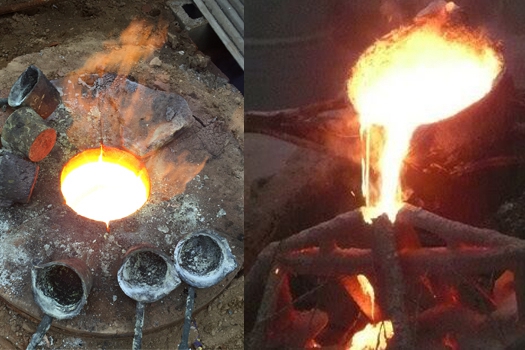
casting bronze
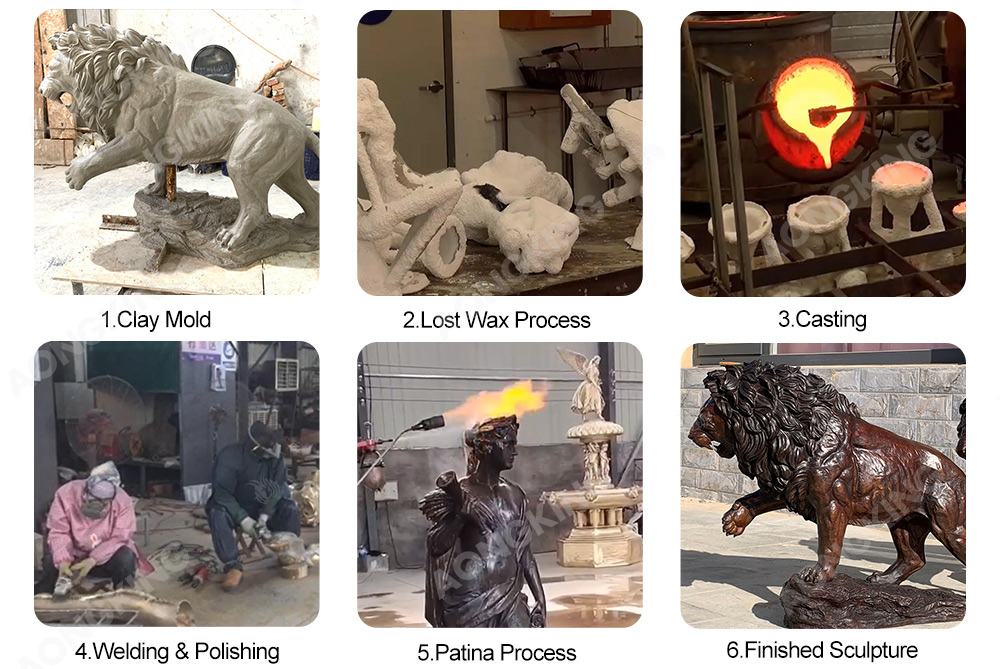
3. Wax type filling system: the melted paraffin wax is poured into the silicone mold that has been made. Let the paraffin cool down. Remove the molded wax mold. Then the wax mold is trimmed.
4. Shell making: there are two kinds of shell making and mold turning:
4-1: One is precision casting (briefly).
4-2: The other is made of resin sandbox. Aongking will make a choice according to the situation of the two kinds of turning schemes. Generally speaking, we choose precision casting for small sculptures or sculptures with complex details. The sandbox production is generally suitable for simple without too complex details and the surface of the sculpture is smooth.
4-3: After the candidate turns over the plan. Pour the wax mold with mortar, and repeat the pouring until the mortar completely covers the wax mold to a certain thickness. Dry the wax mold wrapped in mortar. Then put the shell in the oven and heat it until the paraffin melts. This is the lost wax method of traditional casting.
5. Casting and polishing: The copper ingot is converted into copper water at high temperatures. Pour copper water into the finished shell or sandbox. And then clean the riser grinding.
6 splicing forming: such as casting cold to go. Put the polished bronze pieces together. Through the welding process.Is to make all castings into a complete whole. Once this is done, we should be able to see the general shape and appearance of the cast copper sculpture.
7. Product casting dressing and treatment: for welded castings. The surface is extremely rough. Copper products after welding also need to be sandblasted, cleaning, grinding, shaped, machining, polishing, and other processing.
8. Surface effect treatment and protection of casting sculpture: coloring is usually divided into cold coloring and hot coloring. According to the author’s requirements on the surface of the copper sculpture color, the cast copper surface treatment required effect, so that the shape and color to achieve perfect unity.
9. Oiling and sealing wax: after cleaning the welding joint and coloring the surface. The next is to cast a good sculpture surface oil, sealing wax. Oiling, and sealing wax steps can make the sculpture surface for a long time to maintain a new feeling.
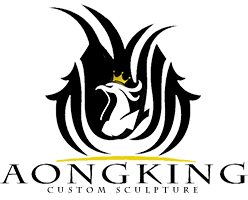
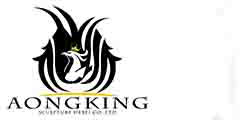
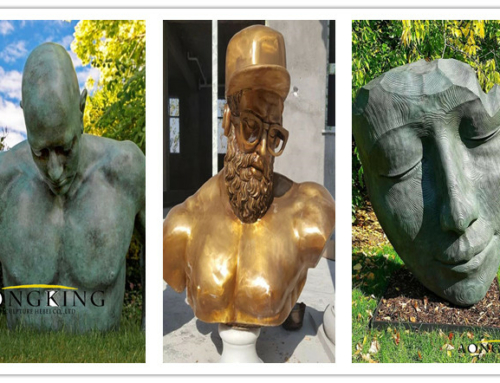
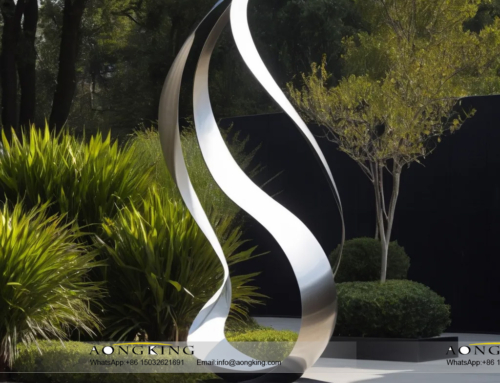
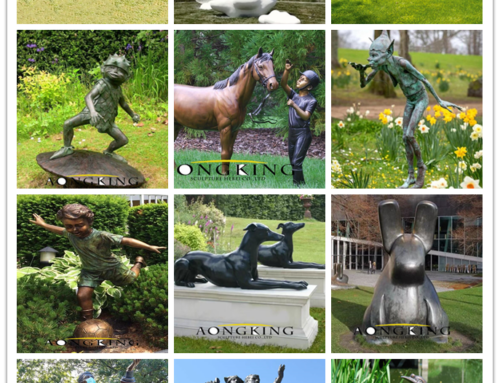
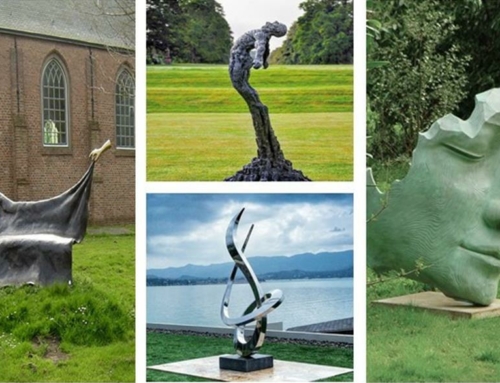
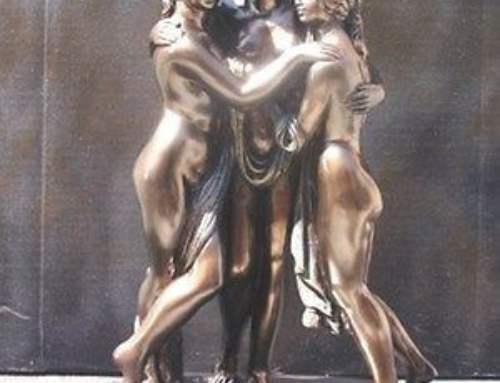
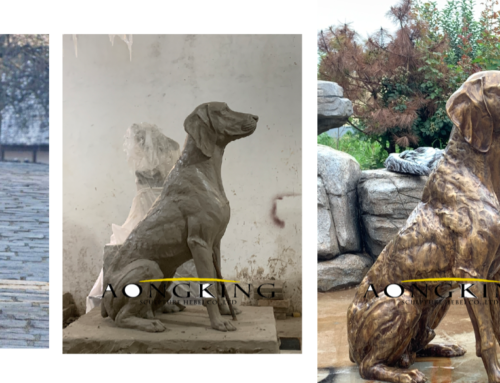
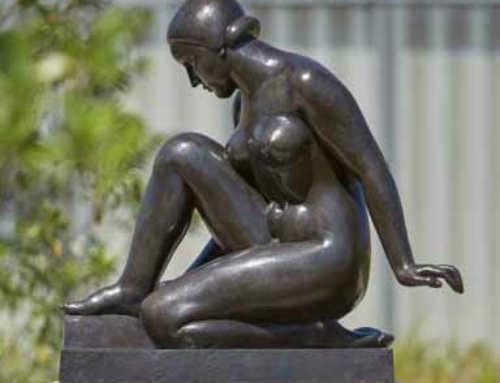
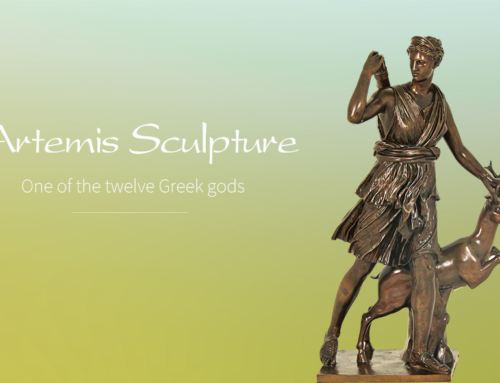
Leave A Comment